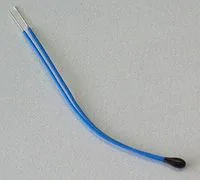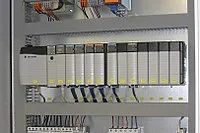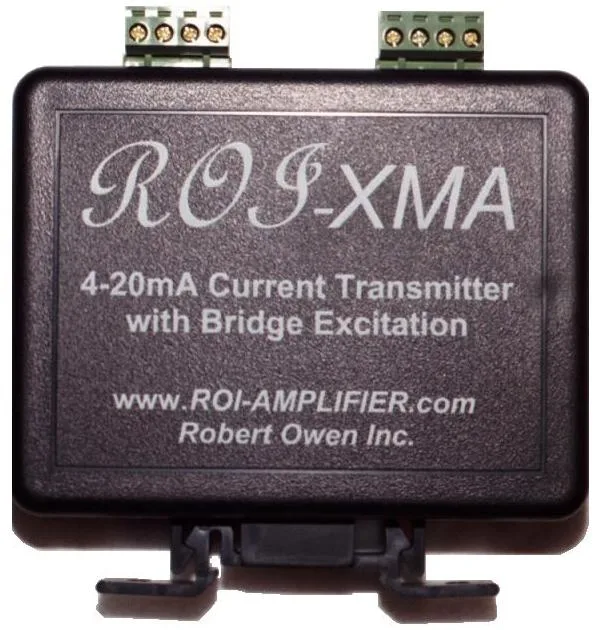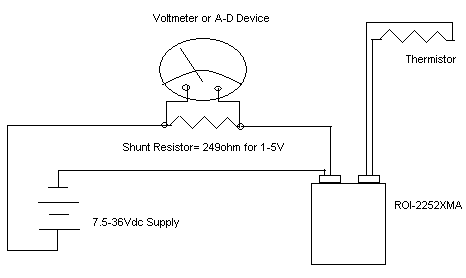Assigned a new task to add a thermistor measurement to your PLC system, you ask yourself “How do I connect a Thermistor to a PLC?”. You may also ask yourself “What is a Thermistor?”. You can start with Wikipedia has a great article on Thermistors which you can read to start your learning. The only problem is that it is just a starting point and it doesn’t really help you get the project done. Let’s use it here to see if we can if we can help start the process of getting up to speed.

What is a Thermistor?
A bare bead thermistor is a low cost accurate way to read temperature. It is measurable as a thermistor changes in resistance (an electrical nature) based on change in temperature. The point is: a thermistor is a sensor that allows you measure a real world physical condition. Temperature, and converting the resulting values that ibe measured. This is normally called a temperature sensor. A thermistor is a low cost and it can be used to sense temperature change, which is why you may want to use it.

What can you connect to a PLC?
The problem is, stock PLC systems, typically have limited types of input ranges to convert analog inputs into digital values for processing. While there are (for some) PLCs option cards that allow additional types of measurement ranges, they may be expensive, they may have a long lead time, and they will require getting a PLC programmer involved to add the new type of measurement. If you stick with an available range, it is just easier. To make use of a generic range, e.g. 4-20mA, it requires a signal conditioner. In the case of a temperature sensor, like the thermistor, it can be referred to as a temperature transmitter.

How do I connect a Thermistor to a PLC?
- You need to understand the sensor. We already know thermistors can convert temperature change to electrical signals (via resistance change). So, there are from the above article we know there are 2 basic types NTC and PTC. The NTC type, is the most commonly used thermistor for temperature sensing. We also know when we look at NTC thermistors, there a a number of possible curves. The 10K at 25C curve is one of the most common used NTC curves for temperature measurement.
- You need to understand the signal conditioning. Because Signal conditioners convert the thermistor temperature sensor signals into a form that can be monitored by the PLC. When you couple a thermistor with a signal conditioner like a thermistor transmitter, the signal conditioned pair becomes a temperature transmitter. Also, temperature transmitters (and other transmitters) are commonly used with PLCs. In other words signal conditioning is necessary. They’re needed when the signal from the transducer is not suitable for the PLC hardware being used.
- So, you need to understand the connections. Because the signal conditioner will need the sensor connection, power connection, and connection to the measurement channel. Also, you will need to collect some cut sheets to put it on paper. The types terminals to connect to the PLC can vary per PLC type. The exact channel will vary based on what is available or unused.

Where can I get thermistor transmitters?
You will find the right thermistor transmitter with Robert Owen Inc.

Robert Owen has years of experience in connecting sensors and software together. Because we code custom software solutions, we can get it done. We offer the approach most suited to the project. We can get it done, regardless of size, because we have the pieces to build solutions. For monitoring anywhere from a single sensor to hundreds. Robert Owen can assist with Sensor Signal Conditioning, Sensor Signal Processing, and Sensor Data Acquisition. Parts in a range of sensor signal connection services we offer.
To learn more Contact Us we look forward to answering your questions.